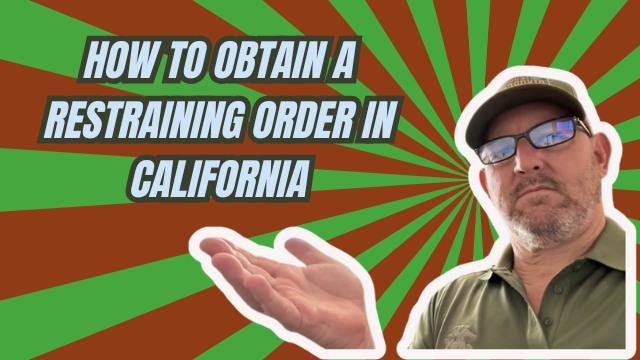How to Obtain a Restraining Order in California
If you are feeling threatened, harassed, or unsafe because of a spouse, former partner, co-parent, or family member, California law provides a clear process to help protect you. The steps can feel intimidating, but acting quickly and filing the right paperwork can secure immediate protection while you prepare for court.
Who Qualifies for a Domestic Violence Restraining Order
You can request a domestic violence restraining order in California when the person causing harm has a close relationship with you. That includes:
- Current spouse or domestic partner
- Former spouse or partner
- Someone you share children with (co-parent)
- A family or household member
The basis for a request is abuse, threats, stalking, harassment, or any behavior that makes you fear for your safety. You will need to describe what happened and how it affected you.
Step-by-Step: Filing a Request for a Domestic Violence Restraining Order
- Get the right forms. Request a Request for Domestic Violence Restraining Order (DV-100 and related forms) from the courthouse, the county court website, or online through California courts resources.
- Write a clear declaration. Explain specific incidents, dates, locations, and details of threats or abuse. Be factual and chronological. Include any witnesses or supporting evidence you have.
- File the forms at the court. Bring the completed forms to the family law clerk at your local courthouse. Ask for a hearing date and request a temporary restraining order right away if you need immediate protection.
- Temporary restraining order (TRO). A judge may issue a TRO the same day you file. This order typically lasts about 21 days and remains in effect until the court hearing.
- Prepare for the hearing. Gather documents, witness statements, police reports, photos, texts, emails, and any other evidence. Both sides will have the opportunity to present their case at the hearing.
What to Include in Your Declaration
- Specific dates and times of incidents whenever possible
- Exact words or threats, if remembered
- Descriptions of physical injuries or property damage
- Any prior reports to police or emergency medical care
- Copies of messages, emails, photos, or recordings that support your account
- Names and contact information for witnesses
The Temporary Restraining Order and the Court Hearing
When a judge believes immediate protection is warranted, they can issue a temporary restraining order the same day you file. That temporary order generally lasts about 21 days. At the scheduled hearing, both you and the other party can present evidence and testimony.
If the judge finds clear and convincing evidence that protection is needed, they can issue a longer-term restraining order. Under California law, a domestic violence restraining order can remain in effect for up to five years, depending on the circumstances and the judge’s findings.
What a Restraining Order Can Do
A restraining order can provide several forms of relief to help keep you safe. Typical protections include:
- Ordering the restrained person to stay away from your home, work, or school
- Prohibiting direct or indirect contact, including calls, texts, and social media messages
- Temporary orders affecting child custody and visitation when necessary for safety
- Orders to move out of a shared home in certain situations
- Prohibiting possession or purchase of firearms when allowed by law
Real Client Example
We recently assisted a client who needed protection from an ex-spouse during a high-conflict divorce. By guiding them through the paperwork, filing quickly, and preparing them for the hearing, the court granted a restraining order. That order provided the peace of mind and safety they needed while the divorce was ongoing. Preparing a clear declaration and presenting organized evidence made a decisive difference.
How We Can Help
If you need help filing a restraining order in California or want to know your options, professional support can make the process faster and less stressful. Services that help with restraining orders typically offer:
- Assistance filling out and filing court forms correctly
- Strategies for writing an effective declaration
- Guidance on gathering and organizing evidence
- Preparation for court hearings
- Flat-fee services for predictable costs during a stressful time
Visit divorce661.com to schedule a free consultation and get step-by-step help filing a restraining order. Getting the right paperwork filed quickly and being fully prepared for the hearing can provide immediate protection and long-term peace of mind.
Practical Tips and Next Steps
- If you are in immediate danger, call 911 first.
- Keep copies of all filed documents and any court orders with you at all times.
- Bring all evidence to your hearing and arrive early.
- Consider obtaining a lawyer or professional filing help if the situation is complex or high conflict.
- After a restraining order is issued, contact local law enforcement if the order is violated.
Taking action can feel daunting, but the legal system is designed to protect people who are threatened or abused by someone close to them. With the right forms, solid documentation, and timely filing, you can secure protection and move forward more safely and confidently.

